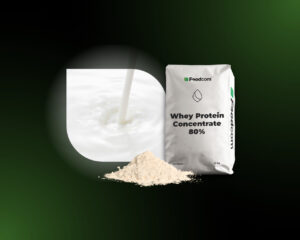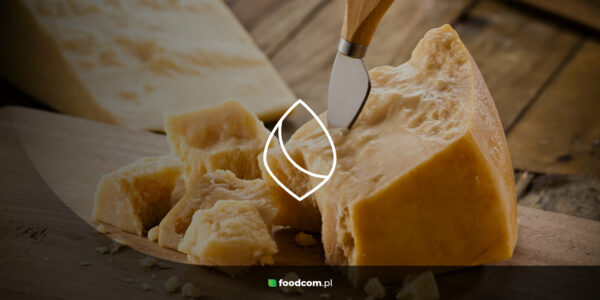- Skimmed Milk Powder in the Netherlands is experiencing an upward trend due to market conditions and projected increases.
- Cheese varieties such as Gouda and Mozzarella are seeing significant price hikes driven by strong demand.
- New Zealand is reversing environmental reforms to support its economy, sparking controversy among environmentalists.
Hello Partners!
Welcome back to our Newsletter!
In this issue, we delve into rising dairy product prices, driven by high demand and challenging market conditions. Discover the latest trends in Skimmed Milk Powder and cheese, with notable price hikes in Gouda and Mozzarella. Fresh cream and raw milk prices are hitting record highs, reshaping the dairy landscape. We also cover global developments, including New Zealand’s policy shifts affecting the dairy sector and the CDC’s efforts to combat bird flu among farm workers. Stay informed with our comprehensive analysis and updates.
Let’s take a look at what else is happening in the dairy market!
Products of the Week
Skimmed Milk Powder
The market for Skimmed Milk Powder (SMP) in the Netherlands is experiencing a slight upward trend. Feed grade SMP prices have risen to 2350-2375 EUR/MT on the spot market, with projections indicating that prices may exceed 2400 EUR/MT in the fourth quarter. Meanwhile, food grade SMP for consumption remains steady at 2350-2400 EUR/MT FCA, although market activity is low. Products with minor defects are being sold at much lower prices. The global market is expected to stay subdued due to low demand from importing countries.
Cheeses
Cheese prices are following the upward trend seen in other dairy fats. Varieties such as Mozzarella and Gouda are now priced above 4000 EUR/MT, with Gouda 48% and Edam 40% ranging between 3900-4150 EUR/MT. The rise in prices is also evident in Cheddar and Emmental, driven by increased demand and market conditions. Furthermore, Cagliata continues to experience steady demand, while Mozzarella sees a significant increase in demand. Overall, prices are continuing to rise.
Whey powders
The Sweet Whey Powder (SWP) market is experiencing low demand and sufficient supply, with food grade prices in the Netherlands, Germany, and Poland ranging from 940 to 1030 EUR/MT and feed grade at 650 to 700 EUR/MT. In Europe, prices are at €925/MT. Despite slight seasonal price increases, the overall outlook remains influenced by the supply-demand imbalance and a preference for whey protein concentrates (WPC) production.
Prices for Whey Protein Concentrates Instant remain high, with European prices at above 10000 EUR/MT. The limited availability of WPC80 continues to drive up prices across all regions. Whey Protein Isolate (WPI) also remains in high demand. The tight supply and strong consumption trends are sustaining these high prices.
Fats
The butter market is experiencing significant price hikes due to inventory shortages. Prices have climbed to 6800-7000 EUR/MT, and the new retail price in Germany is set at 7050-7100 EUR/MT FCA. The limited availability of butter is contributing to the higher wholesale prices, which are now above 7000 EUR/MT.
The market is experiencing low stocks, high consumption, and limited production, pushing prices higher. The outlook is bullish, with expectations of continued price increases due to ongoing high temperatures and strong demand.
Liquids
Cream prices in Europe have seen a dramatic increase, jumping from 8200 EUR/MT to 8600-8700 EUR/MT FCA within a week. This surge underscores the overall upward trend in the dairy market. Cream prices are now approaching their highest historical levels.
Additionally, skimmed milk concentrate (SMC) prices in Germany have risen to 2200-2250 EUR/MT FCA due to constrained product availability. In other parts of Europe, prices are also increasing, with some regions experiencing rises of up to 100 EUR/MT.
High temperatures in Europe are negatively impacting milk production, leading to increased market costs. The rising demand for dairy products such as fresh cream and ice cream is further driving up these costs. Fresh cream has reached 8400 EUR/MT, contributing to a surge in milk prices. Raw milk costs are also hitting record highs, with availability remaining low.
What else?
New Zealand rolls back environmental reforms
New Zealand’s government is reversing several environmental reforms to support a struggling economy, with Prime Minister Christopher Luxon’s coalition lifting a ban on oil and gas exploration, delaying agricultural emission pricing by five years, and encouraging mining. This shift aims to boost exports, which constitute nearly a quarter of the economy, amid minimal growth and a significant current account deficit. Farmers, who played a key role in Luxon’s election, welcomed the changes, arguing that prior environmental policies made dairy and meat production too costly. However, environmentalists criticize these moves as shortsighted and potentially damaging to New Zealand’s long-term sustainability and international reputation. The government is also working on a climate plan involving increased tree planting and renewable energy, but critics argue it falls short of meeting necessary emissions targets.
CDC invests $10 million to fight bird flu
The CDC is investing $10 million to combat bird flu infections among farm workers, with $5 million dedicated to seasonal flu vaccines. This move aims to prevent the spread and mutation of the virus that has affected poultry and dairy farms across many states. Thirteen workers in Colorado, Michigan, and Texas have already contracted the virus, mainly while handling infected poultry. Although the general public’s risk remains low, the CDC plans to educate and vaccinate farm workers to prevent simultaneous infections that could lead to new virus strains. The USDA is confident in its ability to stop the bird flu spread among dairy cows and eliminate the disease.
![Cream and Milk prices hit all-time highs – what’s next?[230th Edition of Foodcom DAIRY Newsletter] Cream and Milk prices hit all-time highs – what’s next?[230th Edition of Foodcom DAIRY Newsletter]](https://foodcom.pl/wp-content/uploads/2024/06/Foodcom_SA_Dairy_Newsletter_3-1520x760.jpg)


![Cheese market review 2026 [Global Report] Cheese market review 2026 [Global Report]](https://foodcom.pl/wp-content/uploads/2024/07/Global-Report-Przeglad-rynku-sera-2024-600x338.jpg)



